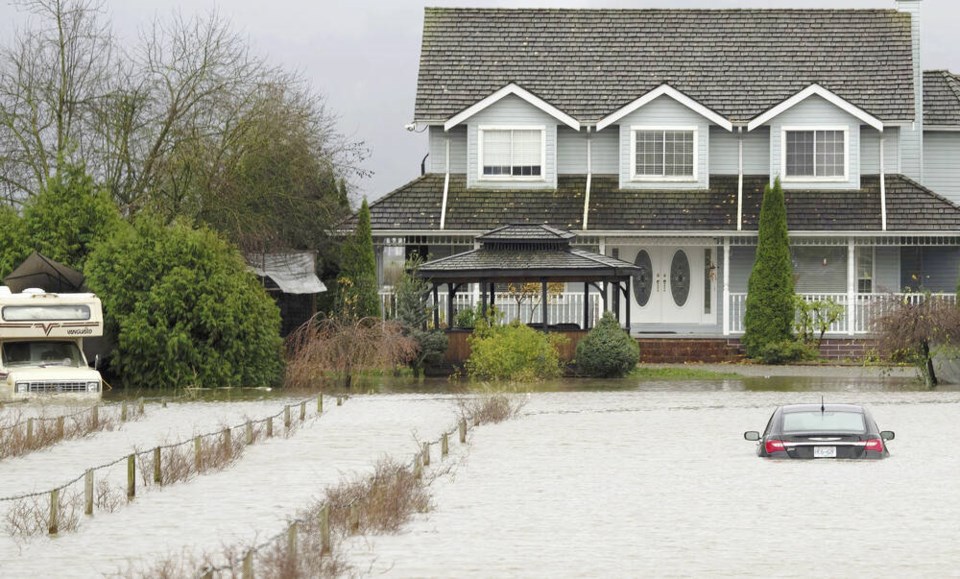Three weeks ago I debated and dismissed the idea of writing about what to do when trapped inside a flooding vehicle. While it happens many times a year across Canada, it’s an anomaly, too infrequent to be a major concern to most here in Lotus Land.
The past 14 days changed my mind.
A month ago I had never heard the term “atmospheric river” yet alone contemplate the swath of devastation it could reap on our province. And it’s only November. If these phenomena are to be our new normal then it’s time to prepare. Today.
There’s a lot of conflicting advice out there on how to escape a flooding car but here’s some points where most experts seem to agree:
By far the most important tip: If there’s any doubt about driving through a flooded area — don’t. Prevention is the best defence. Six inches of water can cause lighter vehicles to float away. Equally important, don’t drive around barricades or “Road Out” signs. Someone put them there for a reason.
Remain calm. This probably would be the most traumatic experience of your life. Think about how you’d get you and your passengers out beforehand. Actually practicing the effort would be great but that’s not really practical for most, especially with neighbours looking out their windows at you. So at least mentally rehearse an escape procedure.
SWOC. It means: Seatbelts off; windows open and; children out first. Developed by professor Gordon Giesbrecht from the University of Manitoba, a place where they know a lot about floods, this acronym is pretty much standard thinking now for a flooding vehicle escape.
Unless you’re James Bond or Jason Bourne the concept of allowing the vehicle to fill with water so you can open the door and swim away is extremely difficult and the absolute last resort. Electric window vehicles should be able to sustain a charge for several seconds even after the engine stalls, allowing you to roll them down.
Though it’s counterintuitive, the oldest child should be rescued first. Older children are stronger, better able to listen to instructions, better able to grab on and help themselves while the adult continues to rescue younger ones or infants.
Do not call 9-1-1 while you’re still in the vehicle and the car is filling up. Seconds matter. Get you and your passengers out and then call if possible.
There’s also some points to consider in flooded vehicle scenarios which are not life threatening.
If your car was immersed and stalled as a result of flooding, don’t restart it. An engine turning over can draw more water through it causing severe damage even to the point of writing the vehicle off. Checking the oil dipstick can often show whether water has penetrated inside the engine. But the best route is to have the vehicle towed and thoroughly inspected by a professional to assess all damage.
Remove water from the interior of the car as quickly as possible. Pooling water in the vehicle interior may lead to more electrical and mechanical damage. Wet vacuuming and ventilating the car thoroughly is also important to prevent mould, mildew and smells which could make it undriveable and not re-sellable.
Often a flooded vehicle is a write-off. So it’s important to proactively discuss with your insurance broker exactly what type of coverage you have applied to your vehicle.
The vast majority of drivers will never face a flooding vehicle challenge. But as the impacts of weather manifest themselves more dramatically each year, drivers have to plan and prepare. Do we really need any more evidence that climate change is now part of a new driver safety reality?
Glove Box: I had some input last week from a reader regarding the safety around vehicle “relay theft” — the ability of thieves to steal your fob’s radio signal and use it to unlock and start your car. Not all fobs are created equal apparently and some manufacturers, including our reader’s, are claiming their fobs are secure against relay thieves.
In April this year the Detroit PD, facing an epidemic of relay car theft, went directly to the big three American automakers and essentially begged them to put in a fix. Each of the big guys, understandably reluctant to discuss security product development, stated they have or were in the process of enhancing fob technology. Some European makers have already made a next step and require the driver to enter a PIN code before the vehicle will start.
Best advice for now: Have a detailed discussion with your dealer about your vehicle’s theft prevention technology but also do your own independent research. Tech is always improving but I’d still stay with the theft prevention ideas I discussed last week, just to be on the safe side.



